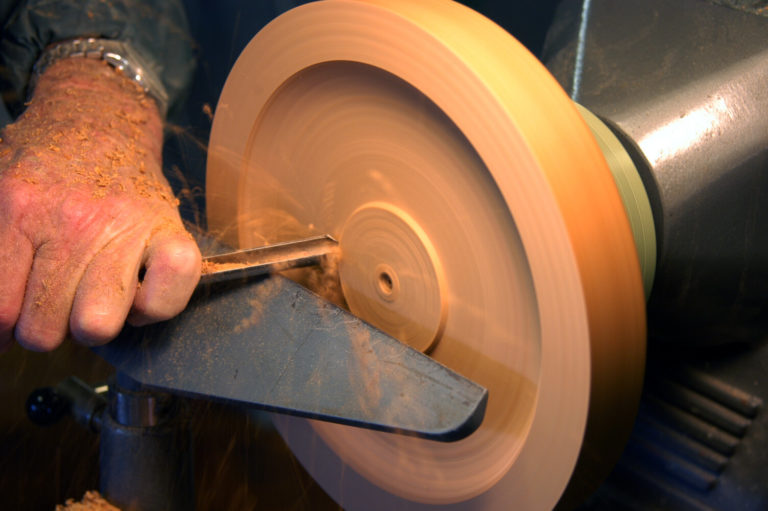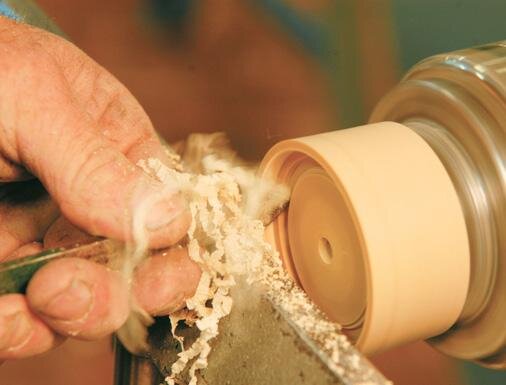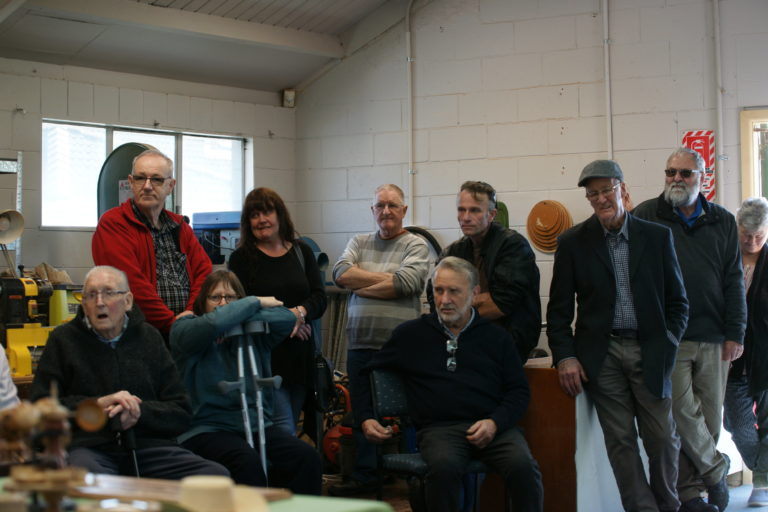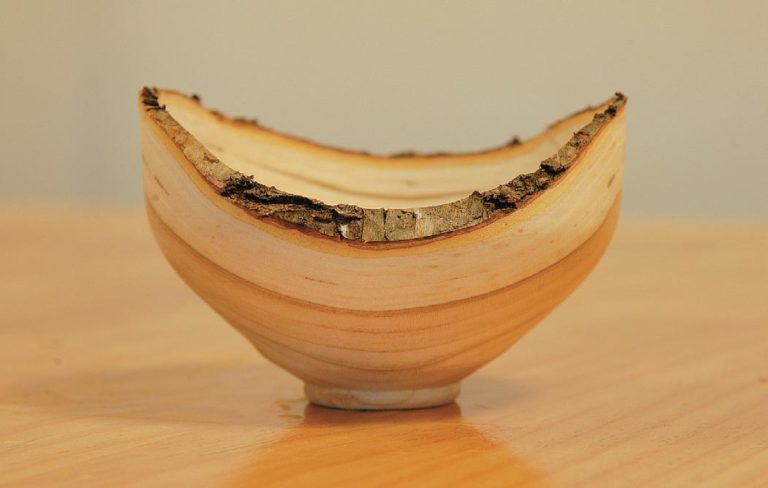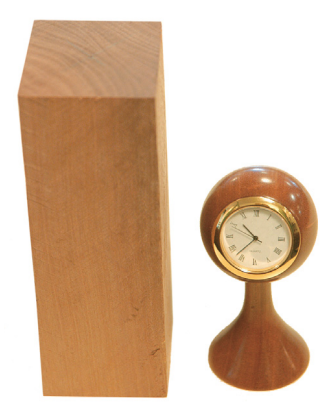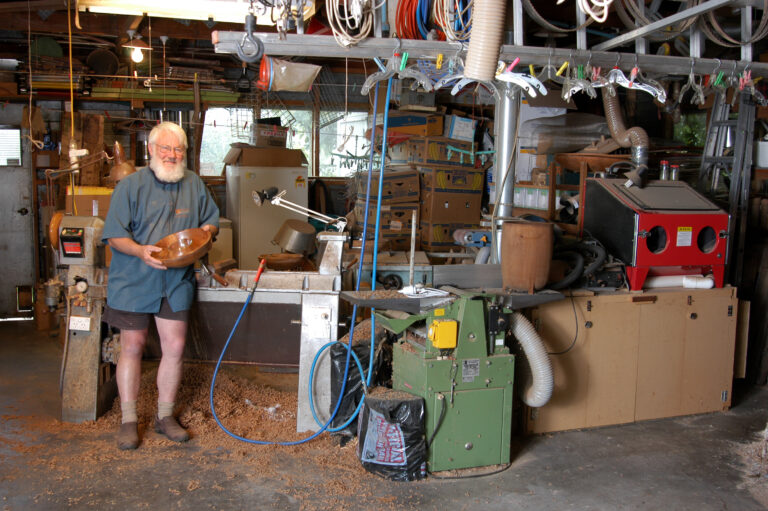
Chips and dip, anyone?
I have used a piece of swamp kauri from Kaitaia for this project. The wood may well be 45,000 years old although pieces of swamp kauri have been carbon dated from 1000 to 50-60,000 years old from different parts of northern New Zealand. The time-scale of this wood is mind-boggling. How do we get this wood? You keep your ear to ground for news about logs and stumps that emerge, then we have to get off our backsides and do something about it. Swamp kauri, and occasionally other timber dug from old swamps have not rotted because they are preserved in anaerobic conditions. Kauri is the most common “swamp” wood because it is the slowest wood to deteriorate when above the ground before the land area became swamp.
For woodturners, kauri is a soft wood. Puriri, pohutukawa, black maire are hard woods, although botanists use the terms “hardwood” and “softwood” in a way that is related to the type of tree and not the hardness of the wood.

